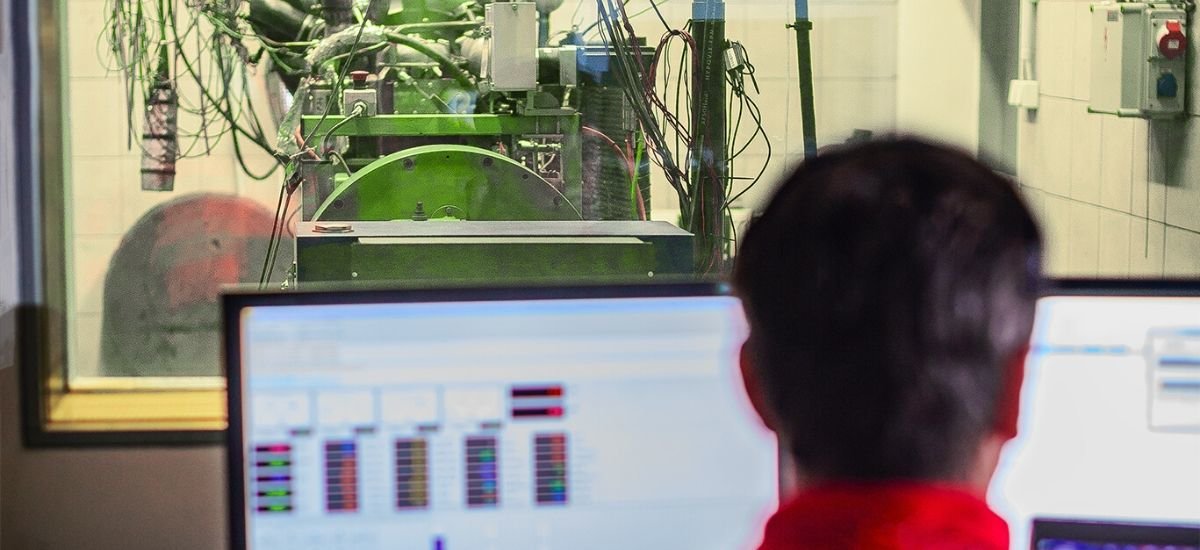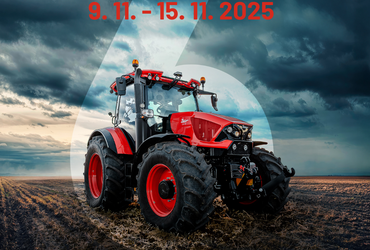- About Tractors
- 17.7.2020
How are engines tested in ZETOR?
Přihlášení

As one of the few companies in the world, ZETOR develops and manufactures most of its engines directly within the company. In modern testing and development center in Brno, several dozen diesel engines undergo thorough testing. The history of their production dates back to the 1930s, when diesel engines for cars, motorcycles and aircrafts began to be produced in what was then Zbrojovka Brno. Since 1946, the engines have also been fitted to ZETOR tractors.
The currently manufactured range of engines is relatively wide, which requires the need to thoroughly test all units. "ZETOR exports machines to different parts of the world, so the engines must be 100% prepared for different emission standards, diverse fuel quality or different uses of the machine," adds Pavel Procházka, Researcher of Laboratory Tests.
It is interesting that ZETOR engines are used not only in tractors, but also in non-tractor applications, such as forklifts, pumping units and mining locomotives. They have become popular with customers across several industries due to their low fuel consumption, high reliability and simple construction. After all, engines with 16-valve technology, which are used in Czech tractors, received one of the best ratings from the German Agricultural Association (DLG). It is considered a leading and independent professional organization in the field of tractors testing, animal husbandry systems and other agricultural equipment.
The engine tests themselves take place at several locations. Today we will look at testing in engine boxes, where engines are attached to special test benches.
Unlike testing in PTO (power-take-off) boxes, where the engine is tested as part of the entire tractor, stand-alone engines are connected directly to a dynamometer during tests, which serves to load the engine with the required torque.
Tests in motor boxes might be divided into three basic categories - development, endurance and periodic quality control tests. These take place only during serial production, when a randomly selected completely assembled engine is connected to a dynamometer, to the required measuring equipment and then, according to the internal methodology, a periodic quality control test is performed in the range of 60 hours. It includes checking the correct setting of the required parameters according to established guidelines. Finally, the tested engine unit undergoes a thorough overhaul, during which the technician checks the condition of individual engine components in detail.
However, most of the work of technicians in engine boxes is focused on the development phase of diesel engines. "Our task is to test engines under predetermined conditions and optimize their technical parameters to meet the strict emission standards set by applicable legislation while maintaining acceptable operational and economic parameters such as fuel consumption," explains Karel Šidlo, Chief Researcher of Laboratory Testing.
The biggest development change in the last 10 years was the transition from Stage IIIB emission level to Stage IV standard, which meant the transition from mechanical to fully electronic engine control.
An example of development tests is the transition from the Stage IV emission standard to the latest Stage V standard, which comes into force this year. For technicians, this means thousands of hours of simulations, parameter settings and measurements over the entire load range of the tested motors. The result of demanding work are world-unique engines that meet the strictest emission standards set by EU and US legislation while maintaining a simple engine solution.
The largest sales of ZETOR machines are in the countries of the European Union. In these markets are already tractors, producing 95% less nitrogen oxide and particulate emissions than 15 years ago. The current generation of engines thus significantly reduces the impact of modern agriculture on the environment. Despite the high demands on environmental friendliness, we still manage to reduce fuel consumption in engines and thus meet the needs of our customers who require machines with low operating costs.


